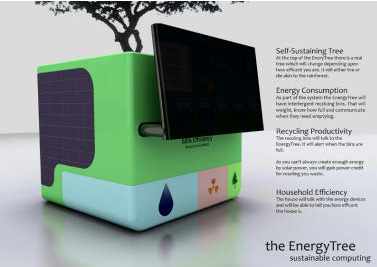Wednesday, April 30, 2008
I have just been to a power saving seminar for high performance computer in Beijing, China. With the recent elevation on energy prices, energy consumption on computers has become a hot topic. It has become so significant that the Chinese government had called on to the computing industry in China to look into it.

When we look into energy saving in computer, we can see two separated directions and courses. Notebook computer users want their computer to last 8 hours before they have to be re-charged. Data centers want power saving for cost and reliability reasons. There are technological means that can achieve power saving results.
On the Notebook Computers

User just won’t be satisfied with 1 to 2 hours of battery power. They want an average of 8 hours usage. That will allow them to go through an international flight and/or a day conference. Methods of saving power on a notebook computer can include the following technologies:
- CPU throttles back for non-critical applications. With new software and hardware techniques, the new PC’s are scalable according to performance required. Your “Word” application might not require peak performance and the computer, therefore, retards itself to save battery power. Of course, this is done seamlessly and transparent to the user.
- Standby power and hibernation mode. In the hibernation mode, the CPU is totally shut down to conserve power. The memory and all the pointer contents are saved into hard-drive. In waking up, the computer quickly retrieves the pointers, restore the DRAM memories and revert itself to the same state.
- Replacing mechanical storage with SSD. Since solid state drives have no mechanical spinning part, it saves tremendous power and improves reliability. With production of the new MLC NAND Flash, SSD is about to be accepted by the average consumer.
- Use smaller geometry CPU and chipset silicon, Intel found that they can now get the same or better performance CPU on 65nm geometry than on their 95nm silicon. They are now bragging about 65W and 45W CPU rather than the 95W and 125W devices only a couple years earlier.
- Use low power, low refresh cycle memories. DRAM memories consume peak power during the refresh cycle. Therefore, the less frequent the refresh is performed, the more power saving is to come.
On the Data Center Server Computers

The emphasis is quite on the contrary. Data centers found that the life-time electrical power consumption of their servers are out costing their hardware by several times. They are also costing precious climate control space and cooling facilities. Additional heat contributes to the failure of the hardware. Their emphasis on solution is different:
- Small and latest multi-core silicon technology is important to them. Smaller silicon geometry and silicon on insulator (SIS) technology drives the direction.
- Since server uses maximum amount of memory, memory power consumption is important. While memories draw peak power during refresh, better refresh technology can translate into power saving. Memories can be refreshed less frequently when the surrounding temperature is cool. Thermal sensors are used to monitor the surrounding temperature and thus determines the refresh cycle and power saving.
- Server computer loses 40% of its power through power conversion into different voltage power supplies for the different sub-systems. There is a drive to unify the voltage on components. It is also a consideration to use 3 phases higher voltage power source to reduce the number of necessary voltage conversion.
- There is also a push for distributed computing to cut down server concentration at one location. Instead, distributed computers at different locations are utilized according to peak time of loading. Thus that there will be less total number of computers needed.
Power Saving Test and Verification

CPU Power Testing is done with benchmark software. Although no standards are set, there is no shortage of specialized software for measuring performance verses power. Since they are not created equal, you can only depend on comparison under the same conditions.
Memory power consumption is based on the JEDEC 7-Icc test. JEDEC had established a power consumption standard on DRAM memory devices. These 7 conditions include full peak refresh power,
By: DocMemory
Copyright © 2023 CST, Inc. All Rights Reserved
|


